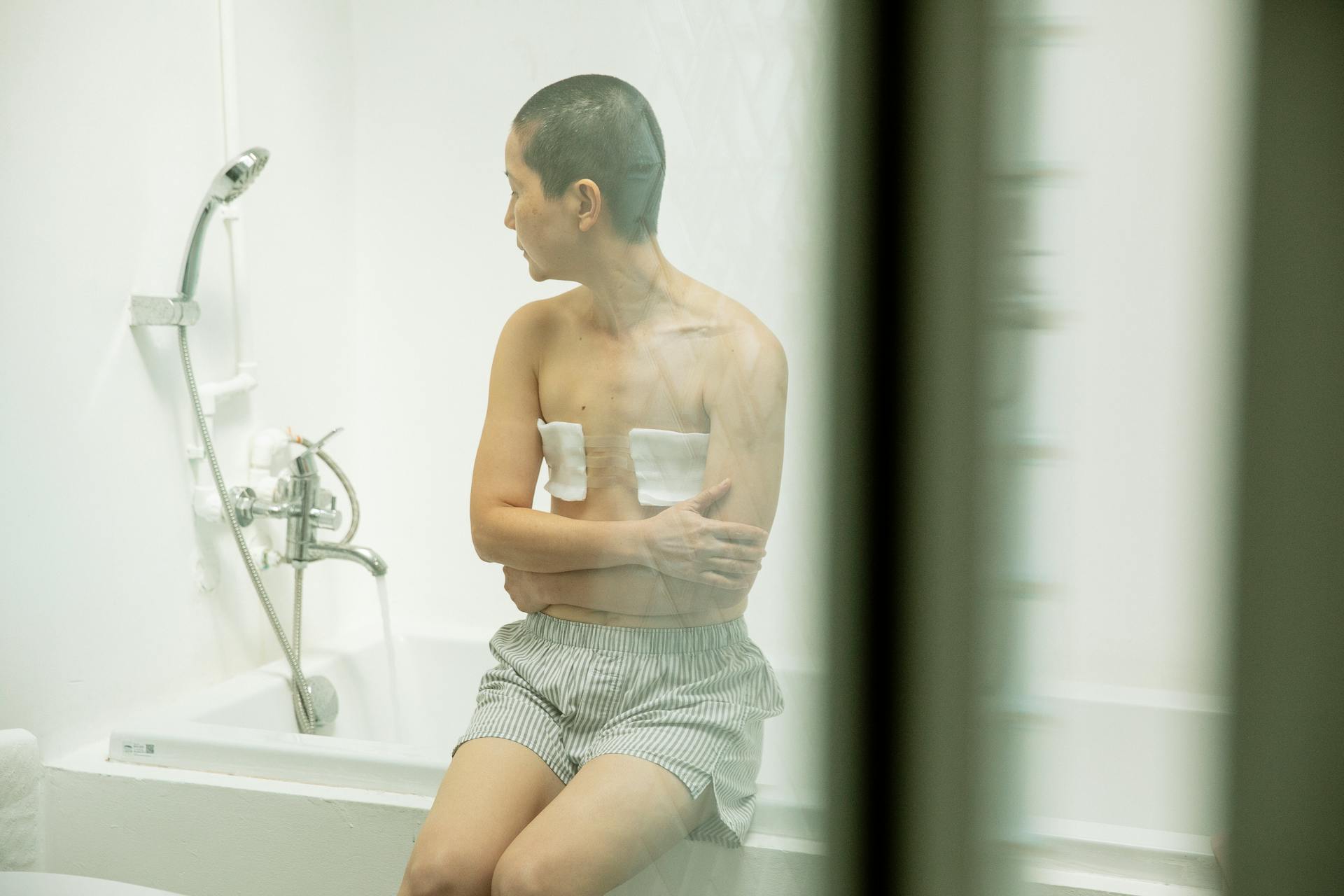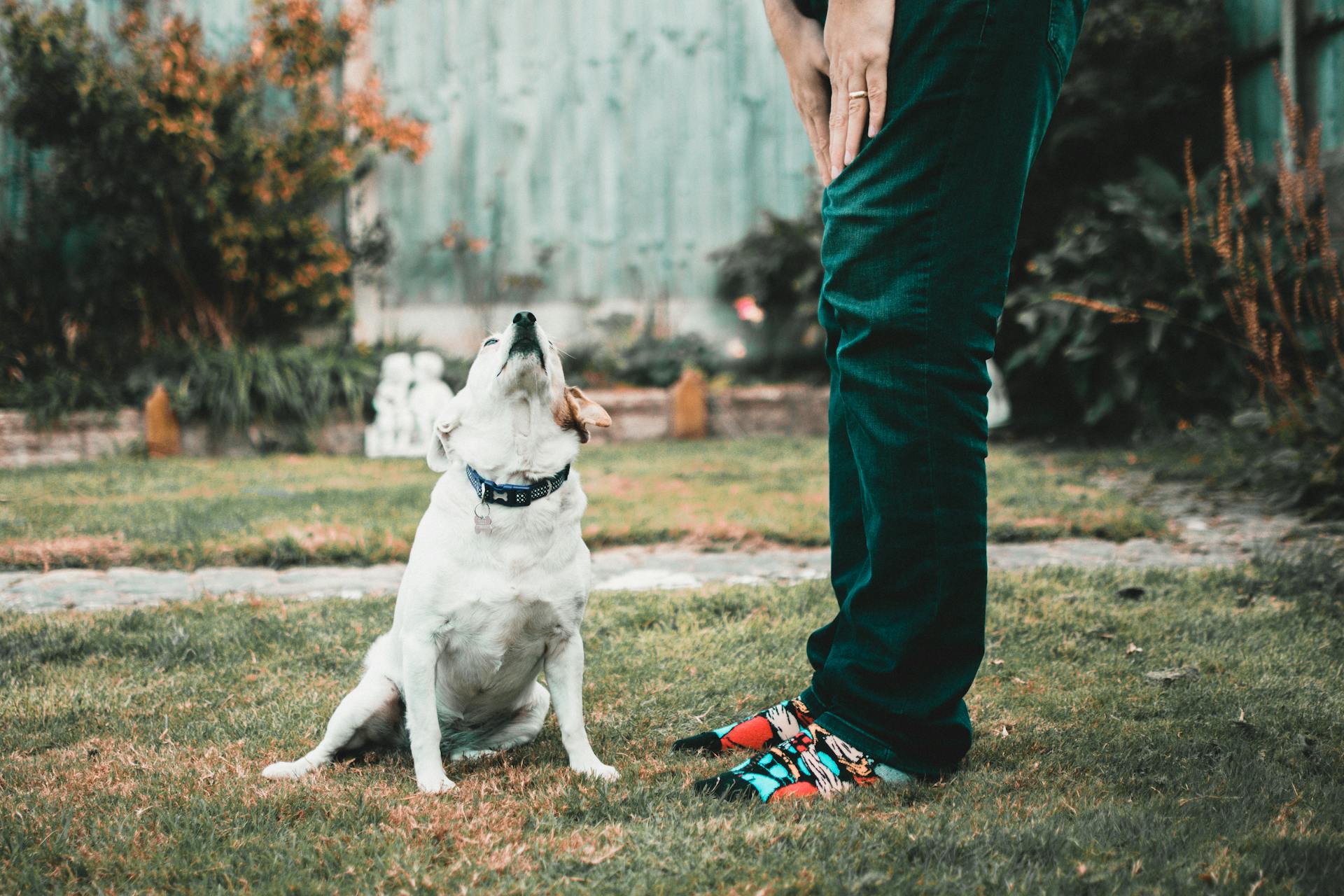
Gastric dilatation volvulus, or GDV, is a serious condition that can affect dogs, particularly deep-chested breeds. It's a life-threatening emergency that requires immediate veterinary attention.
GDV occurs when the stomach twists on itself, cutting off blood flow and preventing the stomach from functioning properly. This can happen suddenly, often after a meal or during exercise.
The risk of GDV is higher in dogs that eat large or heavy meals, and then exercise or engage in strenuous activity shortly after. This can cause the stomach to twist.
Dogs with GDV often exhibit symptoms such as restlessness, panting, and a bloated abdomen. If left untreated, GDV can be fatal.
What Is GDV?
GDV, also known as gastric dilatation volvulus, is a serious condition where the stomach bloats and twists, blocking its entrance and exit. This is extremely painful for dogs and can lead to life-threatening complications.
The stomach becomes more and more bloated as gas continues to build up inside it. This can cause the stomach to squash major blood vessels in the abdomen, reducing blood flow to the heart and other organs.
For more insights, see: Canine Diabetes Glucose Levels
Bloat in dogs is a life-threatening condition that requires urgent veterinary treatment. If you suspect your dog is suffering from bloat, it's essential to seek help immediately.
The stomach's twisting and expansion with gas can put pressure on the lungs, making it difficult for the dog to breathe. This can lead to further complications if not treated promptly.
Here are some potential life-threatening complications of GDV:
- The stomach wall starts to leak bacteria into the bloodstream, causing sepsis (blood poisoning).
- The spleen, which sits next to the stomach, can become twisted – called a ‘splenic torsion’.
Causes and Risk Factors
Gastric dilatation volvulus, also known as GDV, is a serious and life-threatening condition that requires urgent veterinary treatment. The exact cause of GDV is still unknown, but it's more common in large, deep-chested male dogs.
Exercise after eating a large meal or drinking a lot of water may increase the risk of GDV. Anxiety can also be a contributing factor, as dogs that are relaxed and calm are at lower risk.
Dogs with a family history of GDV are more likely to develop the condition. The breeds most at risk include German Shepherds, Great Danes, Saint Bernards, and Dobermanns. These breeds have a higher depth-to-width ratio of the thorax, making them more prone to GDV.
Obese dogs are less likely to develop GDV than healthy or underweight dogs. Stress can also impair gastrointestinal function and increase the risk of GDV.
Some breeds are more susceptible to GDV due to their genetic makeup. The Great Dane, in particular, has a lifetime risk of 42.4% according to one study. Other breeds at risk include the Weimaraner, St Bernard, Irish Setter, and Irish Wolfhound.
Here are some breeds that are more likely to develop GDV:
- Great Dane (10 times more likely)
- Weimaraner (4.6)
- St Bernard (4.2)
- Irish Setter (3.5)
- Irish Wolfhound
- Borzoi
- English Mastiff
- Akita
- Bull Mastiff
- Pointing dogs
- Bloodhound
- Grand Bleu de Gascogne
- Standard Poodle
Symptoms and Diagnosis
Symptoms of GDV can develop quickly and get rapidly worse, so it's essential to contact your vet immediately if you notice any of the following: retching or unproductive vomiting, bloat (swollen tummy), restlessness, excessive drooling, collapse, difficulty breathing, or pale gums.
A distended abdomen is a common sign of GDV, and if you press on your dog's belly, they may feel pain. As the condition progresses, their abdomen may become enlarged, their gums may become pale, and their heart rate may increase.
A diagnosis of GDV is made by considering several factors, including the breed and history of the dog, a physical examination, and radiographs (X-rays). The X-rays may show a stomach distended with gas, and the pylorus may appear as a separate gas-filled pocket.
Some common symptoms of GDV include a change in behavior or restlessness, increased breathing rate or effort, excessive drooling, vomiting white froth or trying to vomit, and a dog's abdomen becoming enlarged. It's also possible for a dog to collapse.
Here are some key symptoms to look out for:
- Retching or unproductive vomiting
- Bloat (swollen tummy)
- Restlessness
- Excessive drooling
- Collapse
- Difficulty breathing
- Pale gums
In severe cases of GDV, blood dyscrasias, such as neutrophilic leukocytosis, lymphopaenia, leukopaenia, thrombocytopaenia, and haemoconcentration, may occur.
Treatment and Surgery
Treatment and surgery are crucial steps in addressing gastric dilatation volvulus (GDV). This is an immediate and life-threatening emergency that requires immediate veterinary intervention.
The veterinarian may first attempt to pass a stomach tube to relieve the pressure in the stomach. If this is not possible due to twisting of the stomach, a large bore needle or catheter may be inserted through the skin into the stomach.
Shock treatment must begin immediately, using intravenous fluids and emergency medications. This helps to stabilize the patient before surgery can be performed.
Surgery is a complex procedure that aims to return the stomach to its normal position, remove any dead or dying stomach tissues, and help prevent future GDV. Several different techniques may be used, including gastropexy and pyloroplasty.
The primary goals of surgery are to return the stomach to its normal position and to help prevent future GDV. A gastropexy involves suturing the stomach wall to the abdominal wall to prevent the stomach from twisting again.
If the spleen has been significantly damaged by the twisted and bloated stomach, it may need to be removed during surgery. This is a serious condition that requires immediate veterinary attention.
Here are some key steps involved in the surgical procedure:
- Return the stomach to its normal position
- Remove any dead or dying stomach tissues
- Perform a gastropexy to prevent future GDV
- Remove the spleen if it has been damaged
After surgery, your dog will need to be monitored closely for any signs of complications, such as peritonitis or infection. Your veterinarian will check for further bloating and possible complications, and may require your dog to stay hospitalized for a day or two.
The cost of surgery for GDV depends on a large number of factors, including the level of treatment your pet requires. Your veterinarian will provide an estimate of costs before treating your pet.
Recommended read: English Bulldog Cherry Eye Surgery Cost
Prevention and Prognosis
Prevention and Prognosis is a crucial aspect of dealing with gastric dilatation volvulus (GDV). Gastropexy, a surgical attachment of the stomach to the body wall, is the most effective means of prevention. In high-risk breeds, some veterinarians recommend performing prophylactic gastropexy at the time of spay or neuter.
Careful attention to diet, feeding, and exercise regimens may also help prevent GDV. Restricting exercise for one hour before and after feeding, and feeding several small meals a day instead of one large meal, can reduce the risk of GDV.
To further reduce the risk of GDV, it's recommended to feed your dog from the floor, rather than a raised bowl, and to try to encourage your dog to drink little and often instead of large amounts in one go. If your dog eats very quickly, consider using a slow feeding bowl or scatter feeding.
Here are some precautions that are likely to help prevent GDV:
- Restrict exercise for one hour before and after feeding
- Restrict car travel for one hour before and after feeding
- Feed several small meals a day instead of one large meal
- Feed them from the floor
- Try to encourage your dog to drink little and often
- Consider using a slow feeding bowl or scatter feeding if your dog eats quickly
Recurrence of GDV attacks can be a problem, occurring in up to 80% of dogs treated medically only. To prevent recurrence, a right-side gastropexy is often performed at the same time the bloat is treated surgically, which significantly reduces the recurrence of gastric volvulus.
Prevention
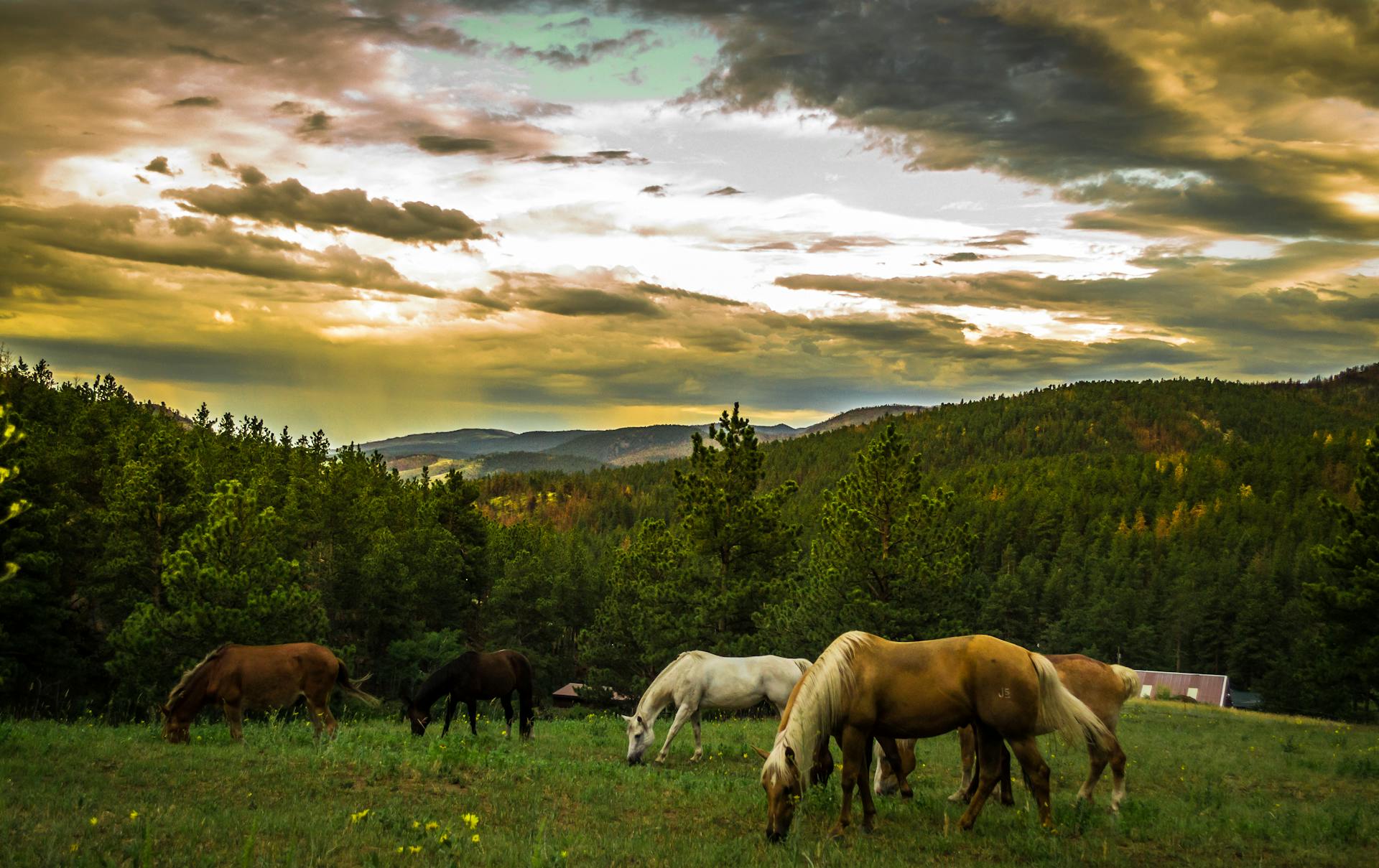
Prevention is key when it comes to reducing the risk of your dog developing a GDV. By making a few simple changes to their diet and exercise routine, you can help minimize their chances of getting bloat.
Feeding small meals throughout the day is a great way to prevent GDV. Instead of giving your dog one large meal, try dividing their food into 2-3 smaller meals.
Exercise after meals can also increase the risk of GDV. Try to restrict your dog's exercise for an hour before and after feeding, and avoid car travel during this time as well.
Some breeds are more prone to GDV than others. Giant and deep-chested breeds, such as German Shepherds, Great Danes, and Saint Bernards, are at higher risk.
If your dog eats very quickly, consider using a slow feeding bowl or scatter feeding to slow them down. This can help prevent GDV by reducing the amount of food they eat at one time.
Here's an interesting read: What Food Is Good for Dogs Skin and Coat
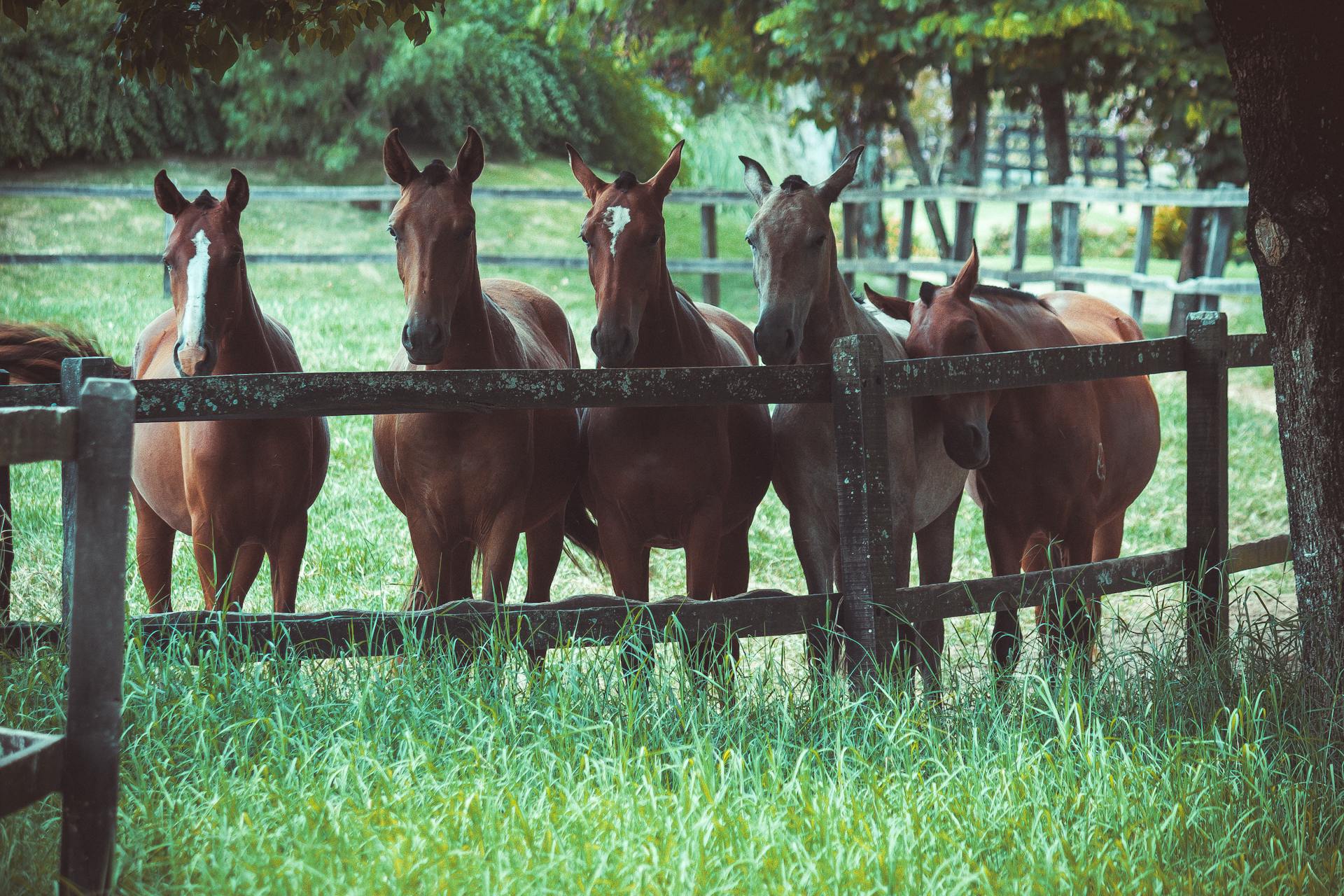
A gastropexy, a surgical attachment of the stomach to the body wall, can be an effective means of prevention. This surgery can be performed at the same time as spaying or neutering in high-risk breeds.
Here are some specific precautions you can take to help prevent GDV:
- Restrict exercise for one hour before and after feeding
- Restrict car travel for one hour before and after feeding
- Feed several small meals a day instead of one large meal
- Feed from the floor, not from a raised bowl
- Encourage your dog to drink little and often instead of large amounts in one go
- Use a slow feeding bowl or scatter feeding if your dog eats quickly
By following these simple tips, you can help reduce your dog's risk of developing a GDV and keep them happy and healthy.
Prognosis
Immediate treatment is the most important factor in a favorable prognosis for dogs with GDV.
A delay in treatment greater than 6 hours can significantly worsen the prognosis, increasing the risk of complications and mortality.
The presence of peritonitis, sepsis, hypotension, or disseminated intravascular coagulation are all negative prognostic indicators that can greatly impact the outcome.
Patients that lack the ability to walk are 4.4 times more likely to die, making it crucial to seek immediate veterinary attention if you notice any signs of GDV in your dog.
Comatose patients are 36 times more likely to die, highlighting the urgent need for treatment in severe cases.
Recommended read: Lick Granuloma Dog Home Treatment
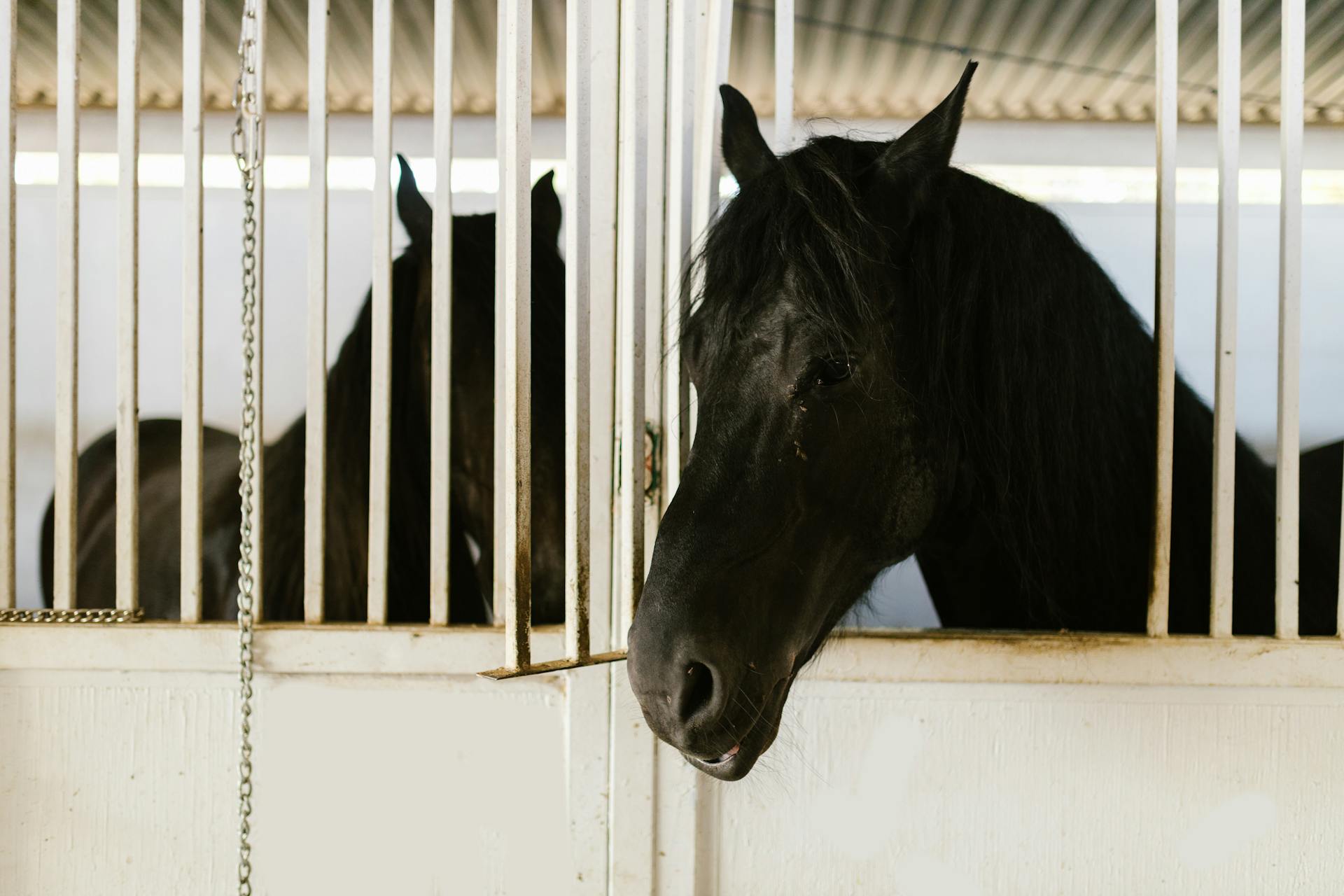
Historically, GDV has held a guarded prognosis, with mortality rates ranging from 10 to 68% in early studies.
More recent studies from 2007 to 2012 reported mortality rates between 10 and 26.8%, showing a slight improvement in outcomes with prompt treatment.
Even with treatment, mortality rates can still approach 10 to 40%, emphasizing the importance of early intervention.
Negative prognostic indicators following surgical intervention include postoperative cardiac arrhythmia, splenectomy, or splenectomy with partial gastric resection, which can significantly impact the outcome.
A longer time from presentation to surgery was associated with a lower mortality, presumably because these dogs had received more complete preoperative fluid resuscitation, thus were better cardiovascularly stabilized prior to the procedure.
If the cardia is necrotic, prognosis is guarded, and many dogs are euthanized due to risks of performing surgery or inability to afford costly surgery and treatment.
Readers also liked: Gastric Dilatation Volvulus Surgery
Frequently Asked Questions
Can a dog survive GDV without surgery?
No, a dog cannot survive GDV without surgery. Without surgical treatment, euthanasia is the only alternative to prevent suffering for the dog.
How quickly does GDV progress?
GDV can progress rapidly, often within 2-3 hours, but its onset can be unpredictable and not always linked to eating. If you suspect your dog is experiencing GDV, seek veterinary attention immediately.
How do you tell if a dog's stomach is flipped?
A dog with a flipped stomach may appear restless, unproductive retching, or show visible distention in the abdomen. If you notice these symptoms, it's essential to seek veterinary attention immediately to prevent a life-threatening condition.
Sources
- https://vcahospitals.com/know-your-pet/bloat-gastric-dilatation-and-volvulus-in-dogs
- https://www.pdsa.org.uk/pet-help-and-advice/pet-health-hub/conditions/gdv-gastric-dilatation-volvulus-in-dogs
- https://www.vets-now.com/pet-care-advice/gdv-bloat-in-dogs/
- https://en.wikipedia.org/wiki/Gastric_dilatation_volvulus
- https://www.akcchf.org/canine-health/top-health-concerns/bloat/
Featured Images: pexels.com

